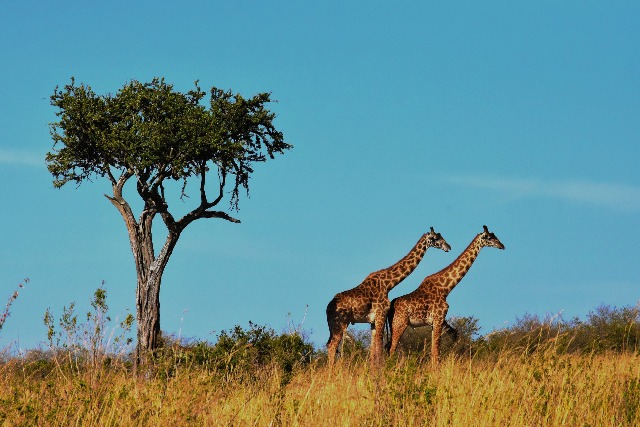According to the annual survey conducted by Safari Bookings, Tanzania’s Serengeti National Park has come out as 2019’s most popular African safari park.
The online safari marketplace took 2,373 reviews to assess the 50 most popular national parks and reserves in Africa. The Serengeti came out on top with an overall rating of 4.92 out of 5, the highest score ever recorded by SafariBookings.com.

The survey revealed that 2019’s top safari parks in Africa are:
- Serengeti National Park, Tanzania
- Mana Pools National Park, Zimbabwe
- Mala Mala Game Reserve, South Africa
- Okavango Delta, Botswana
- Lower Zambezi National Park, Zambia
- Moremi Game Reserve, Botswana
- South Luangwa National Park, Zambia
- Ngorongoro Crater, Tanzania
- Sabi Sand Game Reserve, South Africa
- Masai Mara National Reserve, Kenya
This is the third year in a row the Serengeti has come out on top, while Mana Pools in Zimbabwe jumped up a place from third in 2018 to second. Tanzania, South Africa, Botswana and Zambia all have two national parks or reserves in the top ten, with one each for Kenya and Zimbabwe.

The survey considered 157 parks and reserves across 11 African countries and looked at 1,363 reviews written by safari tourists from 72 countries. 1,010 further reviews were written by safari experts, mostly authors working for guidebook companies such as Lonely Planet, Rough Guides, Bradt, Footprint and Frommer’s.
The Serengeti is one of the most iconic parks in Africa, located in northern Tanzania and spanning 30,000 square kilometres (12,000 square miles). Its most famous attraction is the Great Migration, where over 2.5 million wildebeests, zebras and gazelles follow the rains in a cyclical route around the park and into Kenya’s Masai Mara. To reach Kenya, the herds must cross the Mara River and risk being snapped up by the Nile crocodiles that lie patiently in wait. This dramatic, much-documented event takes place between July and October, drawing thousands of tourists to the northern Serengeti. But the migration can be seen in the Serengeti at any time of the year. From December until February, the herds gather in the southern part of the park to calve and graze on the lush grasses that grow after the rains in November and December.
As well as the Great Migration, the Serengeti is known for its big cat population, especially lions. Leopards and hyenas are also numerous. There are around 70 large mammals that live in the ecosystem, plus 500 bird species.
The landscape is diverse, ranging from granite outcrops or kopjes to swamps and riverine forest. But the park is mostly known for its savannah landscapes – the name Serengeti means ‘endless plains’ in the Maasai language, Maa. Over 80% of these habitats are legally protected by the Tanzanian government.
The survey found that the Serengeti was popular with travellers for the following reasons:
- The annual Great Migration, known as the greatest wildlife show on Earth
- Exceptional year-round wildlife viewing, including large numbers of predators
- The endless savannahs feel like ‘authentic’ Africa
- Visits to the Serengeti are easily combined with other parks and reserves in Tanzania, such as Ngorongoro Crater and Tarangire, as well as the Masai Mara in Kenya
There is also a range of accommodation options available in the Serengeti, making it accessible for travellers with varying budgets, and there’s plenty to see throughout the year – though it’s convenient that the river crossings take place during the northern hemisphere’s summer holiday season.

